Hubble Telescope, all images via NASA/Hubble Telescope research team
NASA’s Hubble Telescope was sent up to space back in 1990 to start taking photographs, giving us a glimpse into worlds we’d barely heard of, or never knew existed.
In 25 years it has delighted us with pictures of nebulas, stars, clusters, eclispses and no end of astrological phenomena.
Floating just above Earth, it’s consistently upgraded and maintained camera lenses offer us greater and greater shots of the universe around us.
And just like anyone else’s landmark birthday, we’re going to look back at photos and accomplishments of old.
So here are ten of Hubble’s best photos with NASA’s own descriptions, but this list is by no means exhaustive. Pop along here to see hundreds of others.
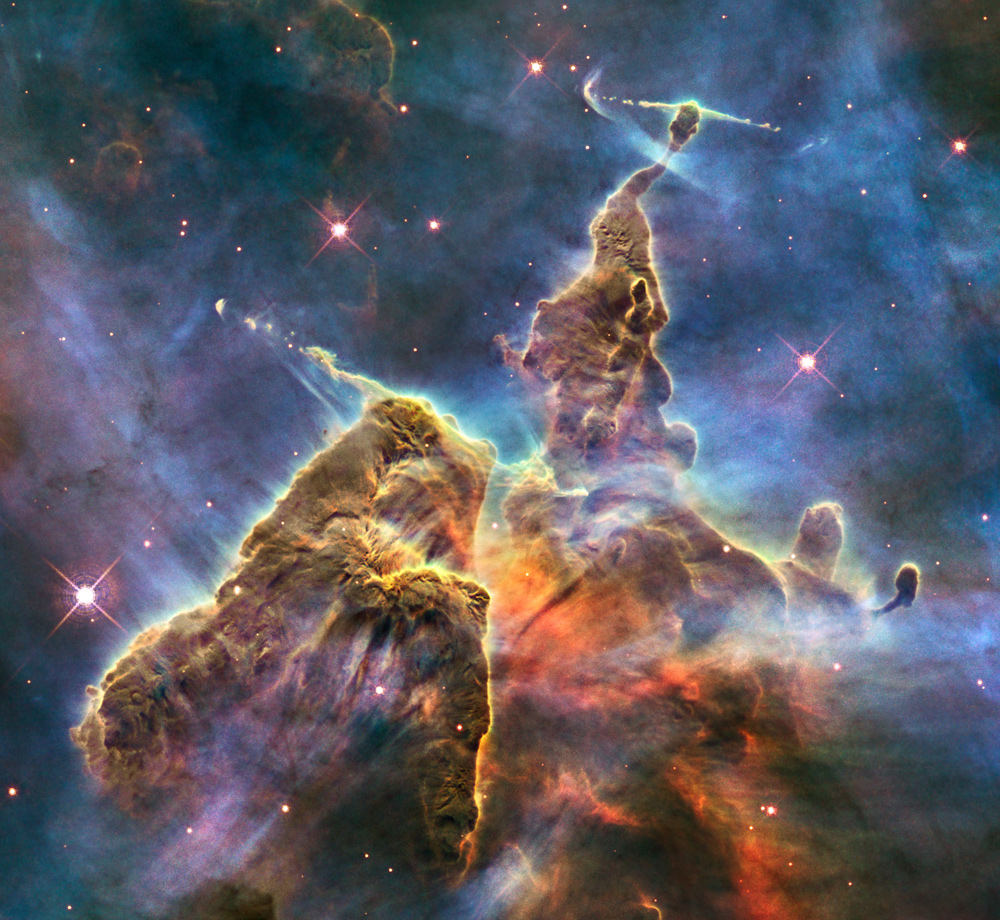
“This craggy fantasy mountaintop enshrouded by wispy clouds looks like a bizarre landscape from Tolkien’s The Lord of the Rings or a Dr. Seuss book, depending on your imagination.
“[This picture] captures the chaotic activity atop a three-light-year-tall pillar of gas and dust that is being eaten away by the brilliant light from nearby bright stars. The pillar is also being assaulted from within, as infant stars buried inside it fire off jets of gas that can be seen streaming from towering peaks.”

“The graceful, winding arms of the majestic spiral galaxy M51 (NGC 5194) appear like a grand spiral staircase sweeping through space. They are actually long lanes of stars and gas laced with dust.
“This sharpest-ever image of the Whirlpool Galaxy, taken in January 2005 […] illustrates a spiral galaxy’s grand design, from its curving spiral arms, where young stars reside, to its yellowish central core, a home of older stars. The galaxy is nicknamed the Whirlpool because of its swirling structure.”
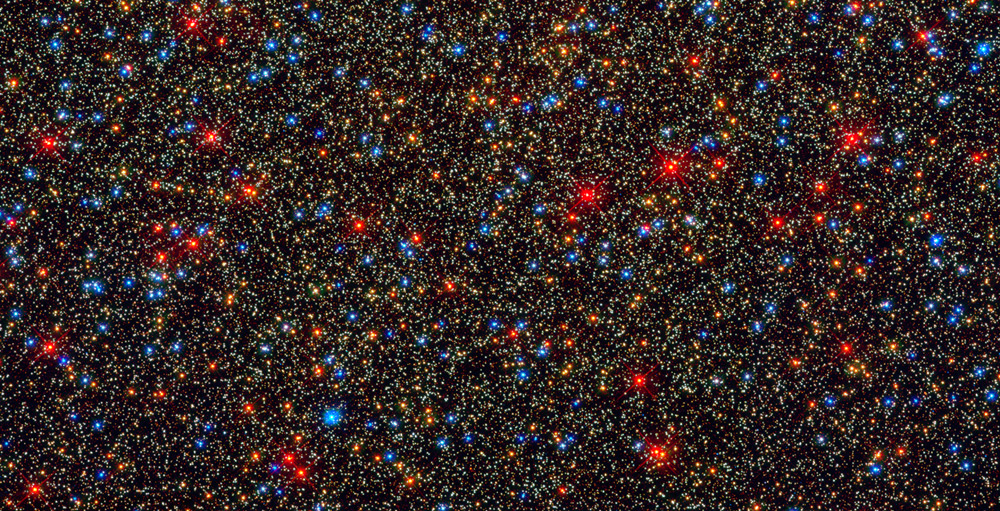
“[Hubble] snapped this panoramic view of a colorful assortment of 100,000 stars residing in the crowded core of a giant star cluster. The image reveals a small region inside the massive globular cluster Omega Centauri, which boasts nearly 10 million stars.
“Globular clusters, ancient swarms of stars united by gravity, are the homesteaders of our Milky Way galaxy. The stars in Omega Centauri are between 10 billion and 12 billion years old. The cluster lies about 16,000 light-years from Earth.”
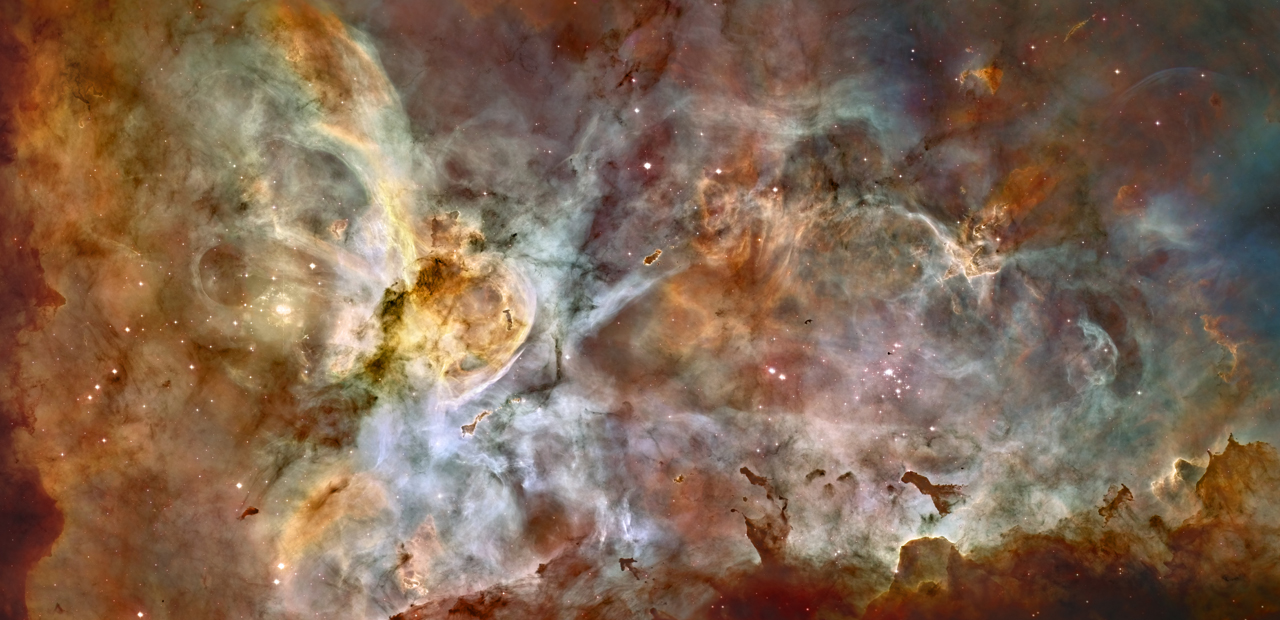
“In celebration of the 17th anniversary of the launch and deployment of NASA’s Hubble Space Telescope, a team of astronomers [released] one of the largest panoramic images ever taken with Hubble’s cameras. It is a 50-light-year-wide view of the central region of the Carina Nebula where a maelstrom of star birth – and death – is taking place.
“Hubble’s view of the nebula shows star birth in a new level of detail. The fantasy-like landscape of the nebula is sculpted by the action of outflowing winds and scorching ultraviolet radiation from the monster stars that inhabit this inferno. In the process, these stars are shredding the surrounding material that is the last vestige of the giant cloud from which the stars were born.”
.jpg)
“This celestial object looks like a delicate butterfly. But it is far from serene. What resemble dainty butterfly wings are actually roiling cauldrons of gas heated to more than 36,000 degrees Fahrenheit. The gas is tearing across space at more than 600,000 miles an hour—fast enough to travel from Earth to the moon in 24 minutes!
“A dying star that was once about five times the mass of the sun is at the centre of this fury. It has ejected its envelope of gases and is now unleashing a stream of ultraviolet radiation that is making the cast-off material glow. This object is an example of a planetary nebula, so-named because many of them have a round appearance resembling that of a planet when viewed through a small telescope.”
.jpg)
“In commemoration of [Hubble] completing its 100,000th orbit in its 18th year of exploration and discovery, scientists […] aimed Hubble to take a snapshot of a dazzling region of celestial birth and renewal. Hubble peered into a small portion of the nebula near the star cluster NGC 2074 (upper, left).
“The region is a firestorm of raw stellar creation, perhaps triggered by a nearby supernova explosion. It lies about 170,000 light-years away near the Tarantula nebula, one of the most active star-forming regions in our Local Group of galaxies. The three-dimensional-looking image reveals dramatic ridges and valleys of dust, serpent-head ‘pillars of creation,’ and gaseous filaments glowing fiercely under torrential ultraviolet radiation. The region is on the edge of a dark molecular cloud that is an incubator for the birth of new stars.”
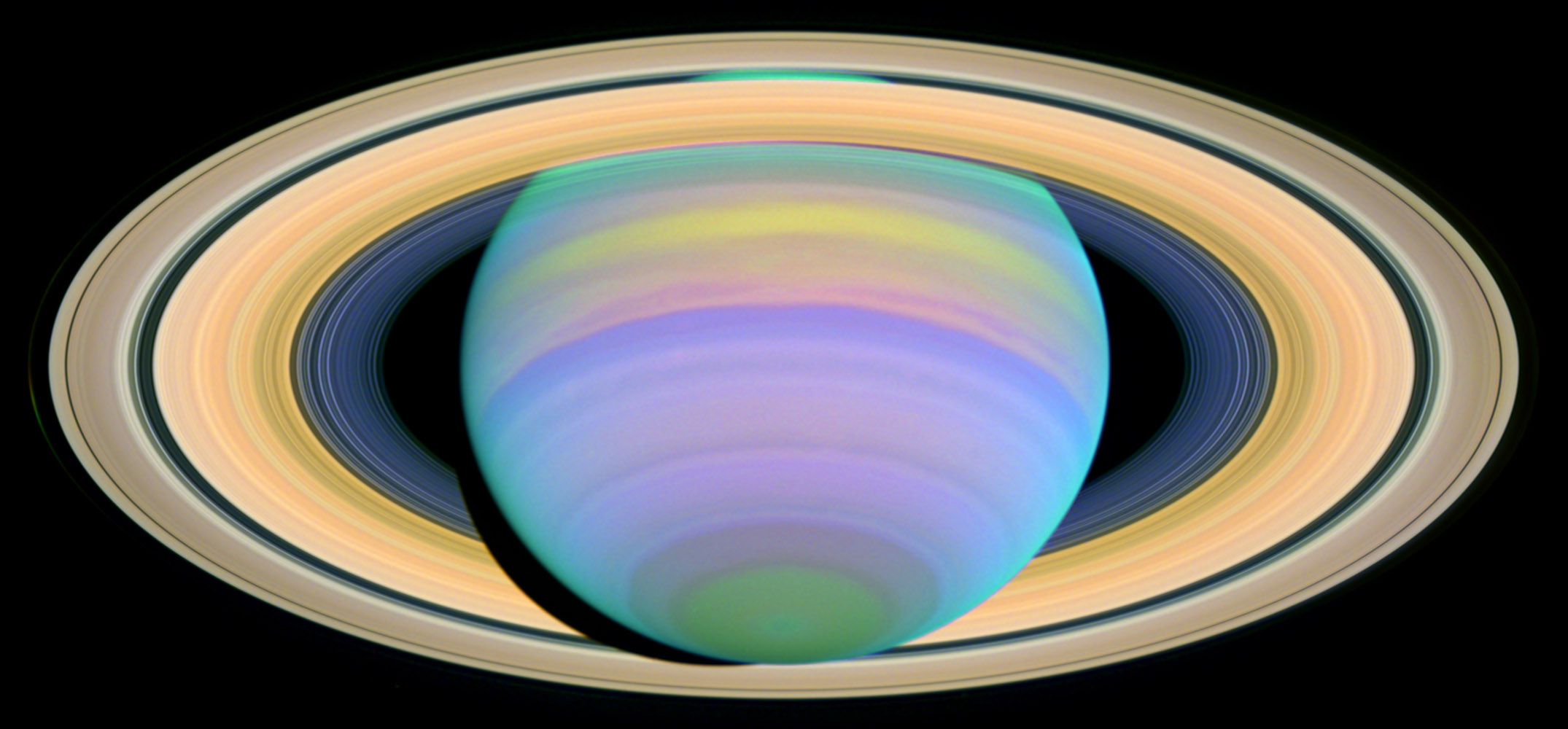
“Saturn is seen here in ultraviolet light. Particles in Saturn’s atmosphere reflect different wavelengths of light in discrete ways, causing some bands of gas in the atmosphere to stand out vividly in an image, while other areas will be very dark or dull.
“This image reveals the properties and sizes of aerosols in Saturn’s gaseous makeup. For example, smaller aerosols are visible only in this ultraviolet image, because they do not scatter or absorb visible or infrared light, which have longer wavelengths.”
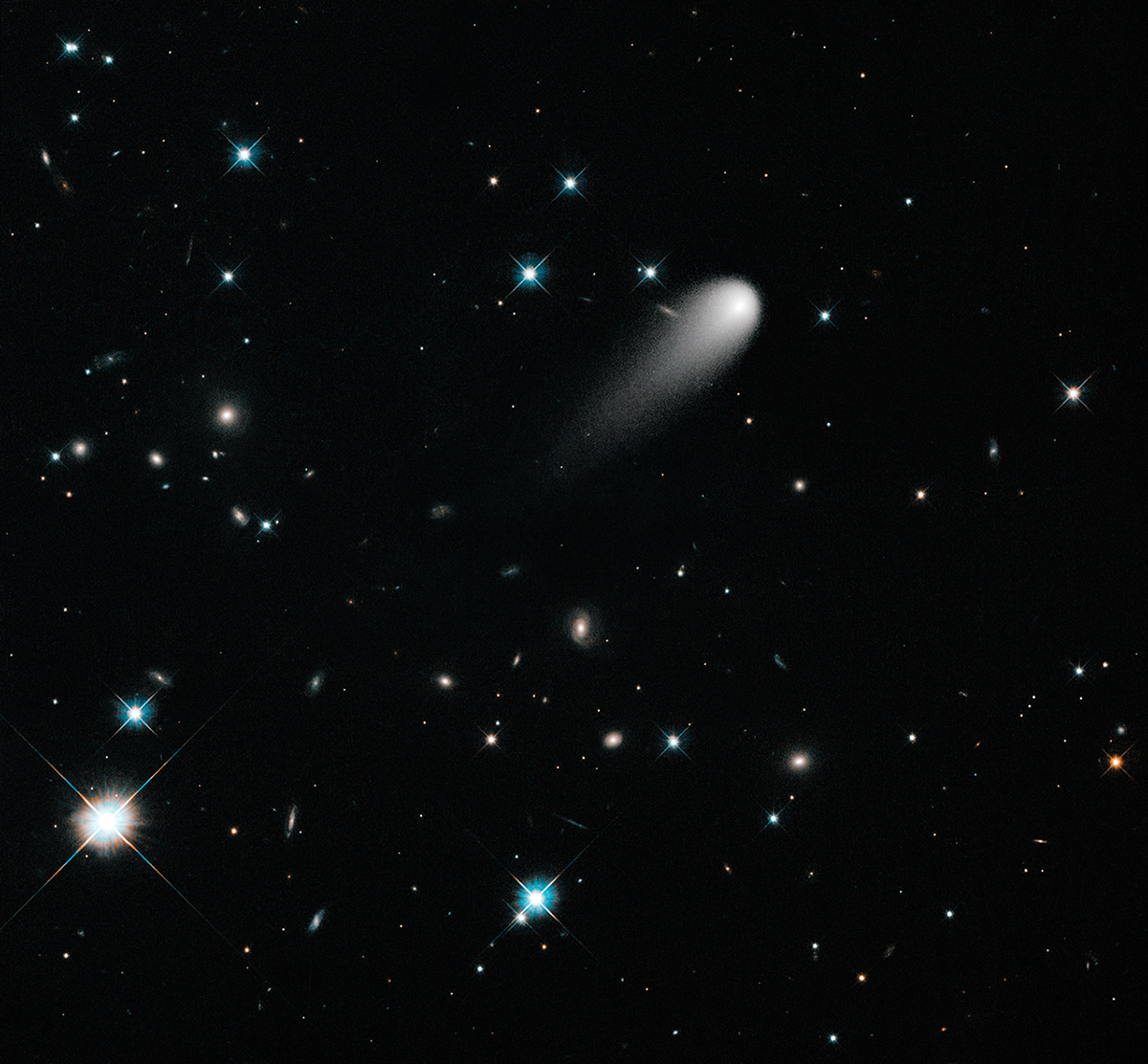
“Comet ISON floats against a seemingly infinite backdrop of numerous galaxies and a handful of foreground stars. The icy visitor, with its long gossamer tail, appears to be swimming like a tadpole through a deep pond of celestial wonders. In reality, the comet is much, much closer.
“The nearest star to the Sun is over 60,000 times farther away, and the nearest large galaxy to the Milky Way is over thirty billion times more distant.”
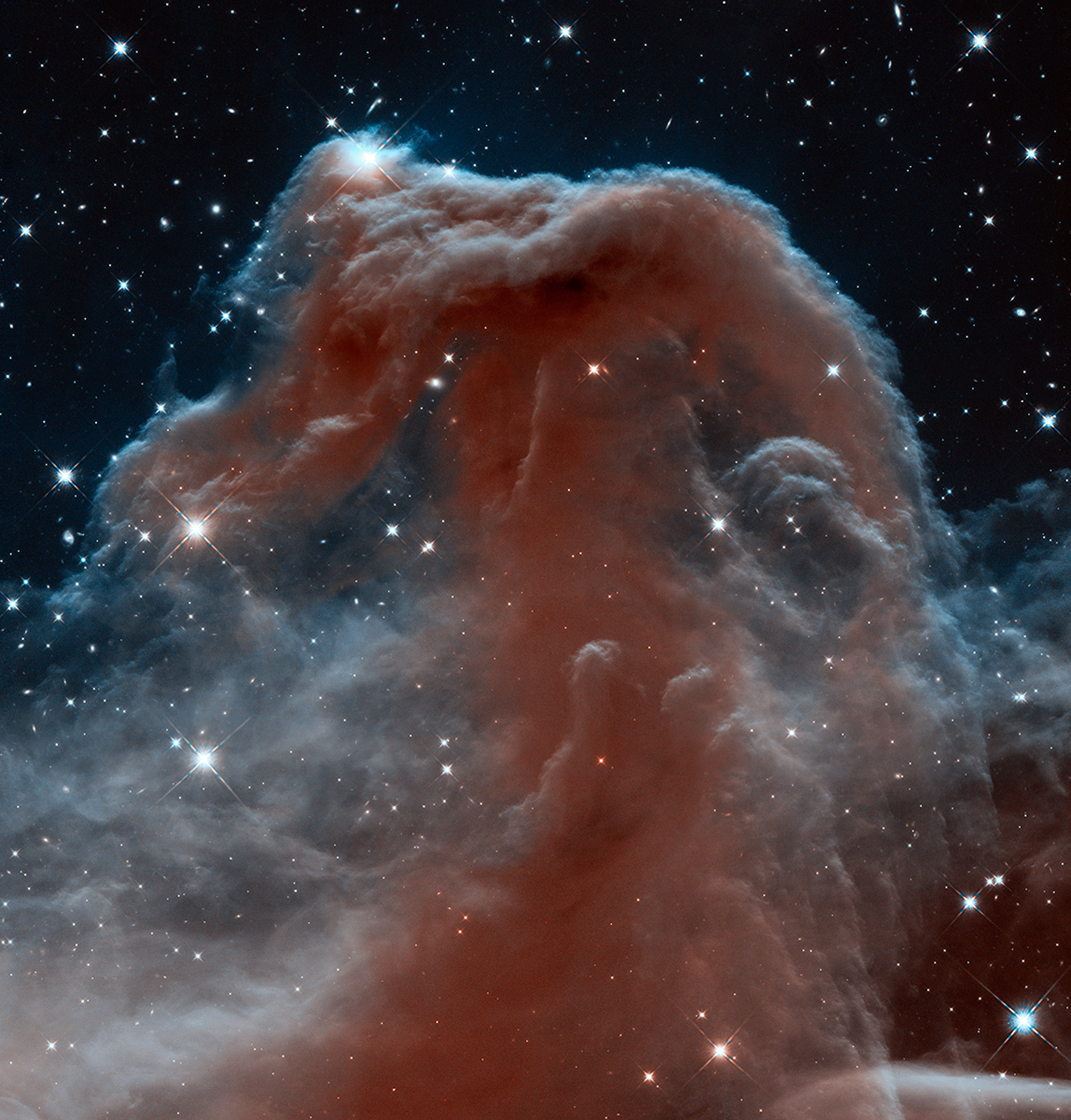
“Looking like an apparition rising from whitecaps of interstellar foam, the iconic Horsehead Nebula has graced astronomy books ever since its discovery over a century ago. The nebula is a favorite target for amateur and professional astronomers.
“The nebula, shadowy in optical light, appears transparent and ethereal when seen in the infrared, represented here with visible shades. The rich tapestry of the Horsehead Nebula pops out against the backdrop of Milky Way stars and distant galaxies that are easily seen in infrared light.”
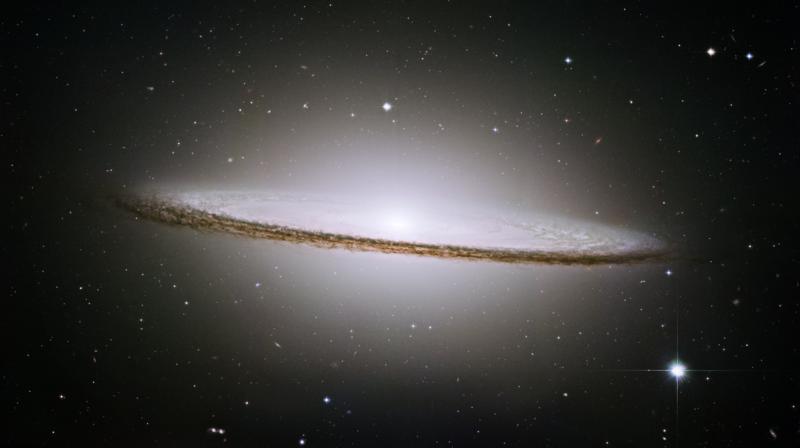
“NASA’s Hubble Space Telescope has trained its razor-sharp eye on one of the universe’s most stately and photogenic galaxies, the Sombrero galaxy, Messier 104 (M104). The galaxy’s hallmark is a brilliant white, bulbous core encircled by the thick dust lanes comprising the spiral structure of the galaxy.
“As seen from Earth, the galaxy is tilted nearly edge-on. We view it from just six degrees north of its equatorial plane. This brilliant galaxy was named the Sombrero because of its resemblance to the broad rim and high-topped Mexican hat.”